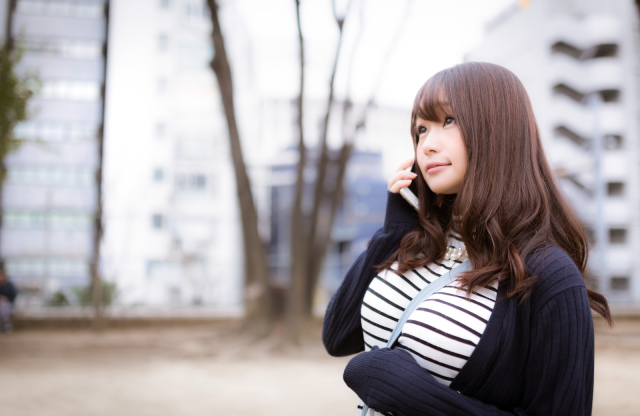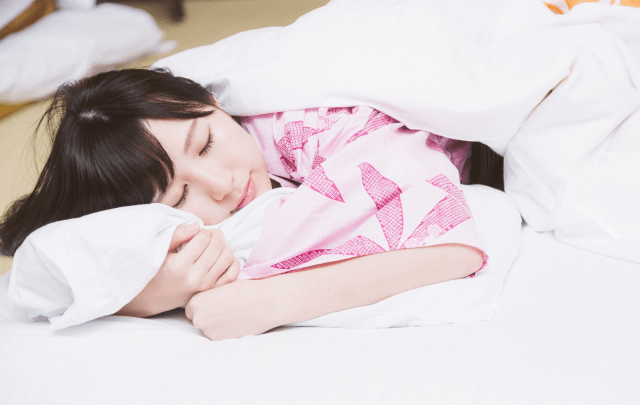
Meanwhile, Japan’s cultural capital, Kyoto, experiences dramatic downsizing.
Japanese cosmetics maker Love Cosme conducts an annual study of bust sizes in Japan, and once it’s tallied its data, it releases a listing of the most common size in each of Japan’s 47 prefectures. In the study’s most recent iteration, which involved 33,813 participants, the researchers found that busts have been growing in the vast majority of Japan’s geographic space, with a startling increase in mammary mass for one prefecture in particular.
First off, the data, collected between January and August of last year, showed a D-cup bust to be the most common, with that being the average size in 27 prefectures, including Tokyo, Hiroshima, and Nagano. Osaka and Kanagawa were among the four prefectures at the top of the scale with an E average, while Kyoto and Nara were among the six at the smallest end with B-cup busts. For the remaining 10 prefectures, such as Hokkaido and Aichi, C-cup breasts were the most common, and no prefecture came out of the survey with an A-cup bust representing the study participants.
The complete list of results is:
● B-cup: Fukui, Kyoto, Nara, Shiga, Oita, Saga
● C-cup: Aichi, Gifu, Hokkaido, Ibaragi, Ishikawa, Kumamoto, Mie, Miyagi, Tochigi, Yamanashi
● D-cup: Akita, Aomori, Ehime, Fukushima, Gunma, Hiroshima, Hyogo, Iwate, Kagawa, Kagoshima, Kochi, Miyazaki, Nagano, Nagasaki, Niigata, Okayama, Okinawa, Saitama, Shimane, Shizuoka, Tokushima, Tokyo, Tottori, Toyama, Wakayama, Yamagata, Yamaguchi
● E-cup: Chiba, Kanagawa, Fukuoka, Osaka
Comparing the most recent results to those from Love Cosme’s 2012 study (which involved 24,819 participants), seven prefectures saw their average sizes go down and 10 stayed the same, with Kyoto experiencing the largest reduction by going from an E in 2012 to a B in 2018, the only three-size drop. Previously D-cup Fukui, Nara, and Shizuoka all moved down two sizes, as did Gifu, shifting from E to C.
On the other hand, the bust size for 30 prefectures grew compared to the 2012 statistics. The largest gain occurred in Saitama, Tokyo’s neighbor to the north, which in 2012 was the only prefecture with an A-cup average. As of the most recent study, though, Saitama has grown to a D bust, the largest gain of any single prefecture (something Love Cosme credits to an increase in average hours of sleep per night for Saitama teen girls over the past few years).
Tokyo itself increased from C to D, and bust sizes in 10 prefectures (Aichi, Fukushima, Hiroshima, Ibaragi, Ishikawa, Mie, Niigata, Okayama, Oita, and Saga) remained the same, compared to 2012.
In closing, it’s worth keeping in mind that in both studies the data was collected by participants filling out a survey, and so the respondents representing each individual prefecture in the most recent survey may or may not be the same ones from 2012. As such, it’s possible that increases or decreases in bust sizes aren’t only being caused by health and diet factors, but also by population redistribution (such as, theoretically, an unusually large number of busty women moving out of Kyoto or into Saitama in the last few years). Because of that, it’s probably best to think of Love Cosme’s survey results as a temporary snapshot of Japan’s ever-changing upper-body topography.
Source: Love Cosme (1, 2) via Hachima Kiko
Top image: Pakutaso (edited by SoraNews24)
Insert images: Pakutaso (1, 2)



 Don’t know which sake to drink? These handy flavor charts help you pick by region of Japan
Don’t know which sake to drink? These handy flavor charts help you pick by region of Japan Tully’s Coffee Japan releases 8 region-limited drinks following drinks election
Tully’s Coffee Japan releases 8 region-limited drinks following drinks election Kinki Gyarados! Japan’s central region gets its first Pokémon manhole covers
Kinki Gyarados! Japan’s central region gets its first Pokémon manhole covers Japanese constipation survey reveals the most and least poop-frustrated prefectures
Japanese constipation survey reveals the most and least poop-frustrated prefectures When do Japanese women have their first kiss? Survey finds gap between different parts of Japan
When do Japanese women have their first kiss? Survey finds gap between different parts of Japan Japan’s new difficult-to-drink-from beer glass protects your liver, but it’s a brutal experience
Japan’s new difficult-to-drink-from beer glass protects your liver, but it’s a brutal experience New Pokémon ice cream, dessert drinks, and cool merch coming to Baskin-Robbins Japan【Pics】
New Pokémon ice cream, dessert drinks, and cool merch coming to Baskin-Robbins Japan【Pics】 New samurai glasses are Japan’s latest weird must-have souvenir
New samurai glasses are Japan’s latest weird must-have souvenir Demon Slayer: Kimetsu no Yaiba gets new roller coaster attractions and food at Universal Studios Japan
Demon Slayer: Kimetsu no Yaiba gets new roller coaster attractions and food at Universal Studios Japan How to order snacks on a Shinkansen bullet train in Japan
How to order snacks on a Shinkansen bullet train in Japan High-fashion Totoro cuddle purse is like an elegant stroll in the forest【Photos】
High-fashion Totoro cuddle purse is like an elegant stroll in the forest【Photos】 Kyoto Tower mascot termination reveals dark side behind cute Japanese characters
Kyoto Tower mascot termination reveals dark side behind cute Japanese characters Caffeinated ramen for gamers that you can eat with one hand going on sale in Japan
Caffeinated ramen for gamers that you can eat with one hand going on sale in Japan Burger King Japan suddenly adds Dr. Pepper and Dr. Pepper floats to its menu nationwide
Burger King Japan suddenly adds Dr. Pepper and Dr. Pepper floats to its menu nationwide Hello, cosmetics! Clinique teams up with Hello Kitty this summer for first-time collaboration
Hello, cosmetics! Clinique teams up with Hello Kitty this summer for first-time collaboration Nintendo history you can feel – Super NES, N64, and GameCube controllers become capsule toys
Nintendo history you can feel – Super NES, N64, and GameCube controllers become capsule toys “The most Delicious Cup Noodle in history” – Japan’s French Cup Noodle wins our heart【Taste test】
“The most Delicious Cup Noodle in history” – Japan’s French Cup Noodle wins our heart【Taste test】 Starbucks releases a cute Frappuccino and Unicorn Cake…but not in Japan
Starbucks releases a cute Frappuccino and Unicorn Cake…but not in Japan McDonald’s Japan’s Soft Twist Tower: A phantom ice cream only sold at select branches
McDonald’s Japan’s Soft Twist Tower: A phantom ice cream only sold at select branches Yabai Ramen: What makes this Japanese ramen so dangerous?
Yabai Ramen: What makes this Japanese ramen so dangerous? Finally! Nintendo Japan expands Switch 8-bit controller sales to everybody, Online member or not
Finally! Nintendo Japan expands Switch 8-bit controller sales to everybody, Online member or not Japanese government wants to build luxury resorts in all national parks for foreign tourists
Japanese government wants to build luxury resorts in all national parks for foreign tourists To combat declining birth rate, Japan to begin offering “Breeding Visas” to foreigners
To combat declining birth rate, Japan to begin offering “Breeding Visas” to foreigners 10 things you should buy at 7-Eleven in Japan
10 things you should buy at 7-Eleven in Japan Studio Ghibli releases anime heroine cosplay dresses that are super comfy to wear
Studio Ghibli releases anime heroine cosplay dresses that are super comfy to wear Woman charged for driving suitcase without a license in Osaka
Woman charged for driving suitcase without a license in Osaka Studio Ghibli unveils My Neighbour Totoro miniature house model
Studio Ghibli unveils My Neighbour Totoro miniature house model Kyoto experiencing problems with foreign tourists not paying for bus fares, but not on purpose
Kyoto experiencing problems with foreign tourists not paying for bus fares, but not on purpose Fighting mild hunger with a Japanese soda that turns into jelly in the stomach【Taste test】
Fighting mild hunger with a Japanese soda that turns into jelly in the stomach【Taste test】 Studio Ghibli’s Howl’s Moving Castle tapestry unveiled in Japan for first time
Studio Ghibli’s Howl’s Moving Castle tapestry unveiled in Japan for first time McDonald’s new Happy Meals offer up cute and practical Sanrio lifestyle goods
McDonald’s new Happy Meals offer up cute and practical Sanrio lifestyle goods Sales of Japan’s most convenient train ticket/shopping payment cards suspended indefinitely
Sales of Japan’s most convenient train ticket/shopping payment cards suspended indefinitely Sold-out Studio Ghibli desktop humidifiers are back so Totoro can help you through the dry season
Sold-out Studio Ghibli desktop humidifiers are back so Totoro can help you through the dry season Japanese government to make first change to romanization spelling rules since the 1950s
Japanese government to make first change to romanization spelling rules since the 1950s Foreigner’s request for help in Tokyo makes us sad for the state of society
Foreigner’s request for help in Tokyo makes us sad for the state of society Ghibli founders Toshio Suzuki and Hayao Miyazaki contribute to Japanese whisky Totoro label design
Ghibli founders Toshio Suzuki and Hayao Miyazaki contribute to Japanese whisky Totoro label design Doraemon found buried at sea as scene from 1993 anime becomes real life【Photos】
Doraemon found buried at sea as scene from 1993 anime becomes real life【Photos】 Tokyo’s most famous Starbucks is closed
Tokyo’s most famous Starbucks is closed Princesses, fruits, and blacksmiths: Study reveals the 30 most unusual family names in Japan
Princesses, fruits, and blacksmiths: Study reveals the 30 most unusual family names in Japan Smooching survey: Finding out what age Japanese women had their first kiss
Smooching survey: Finding out what age Japanese women had their first kiss Starbucks Japan joins Been There drinkware line with 20 cool designs for all over Japan【Pics】
Starbucks Japan joins Been There drinkware line with 20 cool designs for all over Japan【Pics】 The Tokyo area welcomed more new foreign residents than Japanese ones last year
The Tokyo area welcomed more new foreign residents than Japanese ones last year Get lucky: Survey polls Japanese women about their one-night-only amorous affairs in satin sheets
Get lucky: Survey polls Japanese women about their one-night-only amorous affairs in satin sheets Pork or beef? A peek into how Japan’s curry preferences change from place to place
Pork or beef? A peek into how Japan’s curry preferences change from place to place Chinese restaurant gives discounts to women based on their breast size, G-cup gets 65 percent off
Chinese restaurant gives discounts to women based on their breast size, G-cup gets 65 percent off Prefectural rivalry in Japan: Survey reveals which areas compete against each other, and why
Prefectural rivalry in Japan: Survey reveals which areas compete against each other, and why Living the hotel life across Japan – Monthly plan lets you jump between 35 hotels, 12 prefectures
Living the hotel life across Japan – Monthly plan lets you jump between 35 hotels, 12 prefectures Annual survey reveals Gifu jumped 41 spots to become the prefecture with the most karaage eaters
Annual survey reveals Gifu jumped 41 spots to become the prefecture with the most karaage eaters Reports of the death of Tokyo’s Daikanyama neighborhood have been greatly exaggerated
Reports of the death of Tokyo’s Daikanyama neighborhood have been greatly exaggerated Starbucks’ cool new Japan Geography tumblers will take you on a trip around the country
Starbucks’ cool new Japan Geography tumblers will take you on a trip around the country Japanese lingerie saleswoman gives Internet a lesson in what bust sizes look like in real life
Japanese lingerie saleswoman gives Internet a lesson in what bust sizes look like in real life Five Chinese nationals arrested in Japan for translating manga, games for distribution
Five Chinese nationals arrested in Japan for translating manga, games for distribution Lawson adds UFO Catcher crane games to convenience stores in Japan
Lawson adds UFO Catcher crane games to convenience stores in Japan Online survey sheds light on prefectural personality rankings of Japanese people
Online survey sheds light on prefectural personality rankings of Japanese people
Leave a Reply